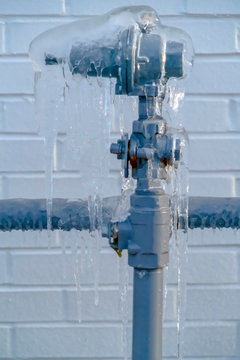Preventing Frozen Plumbing: Best Tips for Winter
Preventing Frozen Plumbing: Best Tips for Winter
Blog Article
We have discovered this article about How To Avoid Freezing Pipes directly below on the web and figured it made good sense to write about it with you on my blog.

Winter can wreak havoc on your pipes, specifically by freezing pipes. Below's exactly how to prevent it from taking place and what to do if it does.
Introduction
As temperature levels drop, the threat of icy pipes increases, potentially leading to expensive repair services and water damage. Recognizing exactly how to avoid frozen pipes is crucial for property owners in cool climates.
Understanding Icy Pipelines
What causes pipes to ice up?
Pipelines freeze when subjected to temperature levels below 32 ° F (0 ° C) for prolonged durations. As water inside the pipes ices up, it expands, taxing the pipeline wall surfaces and possibly causing them to burst.
Threats and problems
Icy pipes can lead to water supply disturbances, home damages, and pricey repair services. Ruptured pipelines can flooding homes and create comprehensive structural damages.
Indicators of Frozen Piping
Identifying frozen pipes early can avoid them from bursting.
Just how to recognize icy pipes
Try to find decreased water flow from faucets, uncommon odors or sounds from pipes, and visible frost on revealed pipelines.
Prevention Tips
Shielding prone pipes
Cover pipes in insulation sleeves or use heat tape to safeguard them from freezing temperature levels. Concentrate on pipelines in unheated or outside areas of the home.
Heating techniques
Keep interior areas adequately warmed, particularly locations with plumbing. Open cupboard doors to allow warm air to flow around pipes under sinks.
Protecting Exterior Plumbing
Yard hose pipes and outdoor faucets
Detach and drain pipes garden hose pipes prior to winter season. Install frost-proof spigots or cover outside faucets with protected caps.
What to Do If Your Pipelines Freeze
Immediate actions to take
If you suspect frozen pipes, maintain faucets open up to eliminate pressure as the ice melts. Use a hairdryer or towels soaked in hot water to thaw pipes slowly.
Long-Term Solutions
Structural adjustments
Consider rerouting pipes away from exterior wall surfaces or unheated areas. Include extra insulation to attic rooms, basements, and crawl spaces.
Upgrading insulation
Buy premium insulation for pipes, attic rooms, and wall surfaces. Appropriate insulation helps preserve regular temperature levels and lowers the danger of icy pipelines.
Final thought
Protecting against frozen pipes requires positive actions and quick responses. By recognizing the causes, indicators, and safety nets, house owners can shield their pipes throughout cold weather.
5 Ways to Prevent Frozen Pipes
Drain Outdoor Faucets and Disconnect Hoses
First, close the shut-off valve that controls the flow of water in the pipe to your outdoor faucet. Then, head outside to disconnect and drain your hose and open the outdoor faucet to allow the water to completely drain out of the line. Turn off the faucet when done. Finally, head back to the shut-off valve and drain the remaining water inside the pipe into a bucket or container. Additionally, if you have a home irrigation system, you should consider hiring an expert to clear the system of water each year.
Insulate Pipes
One of the best and most cost-effective methods for preventing frozen water pipes is to wrap your pipes with insulation. This is especially important for areas in your home that aren’t exposed to heat, such as an attic. We suggest using foam sleeves, which can typically be found at your local hardware store.
Keep Heat Running at 65
Your pipes are located inside your walls, and the temperature there is much colder than the rest of the house. To prevent your pipes from freezing, The Insurance Information Institute suggests that you keep your home heated to at least 65 degrees, even when traveling. You may want to invest in smart devices that can keep an eye on the temperature in your home while you’re away.
Leave Water Dripping
Moving water — even a small trickle — can prevent ice from forming inside your pipes. When freezing temps are imminent, start a drip of water from all faucets that serve exposed pipes. Leaving a few faucets running will also help relieve pressure inside the pipes and help prevent a rupture if the water inside freezes.
Open Cupboard Doors
Warm your kitchen and bathroom pipes by opening cupboards and vanities. You should also leave your interior doors ajar to help warm air circulate evenly throughout your home.

I found that post about Preventing and dealing with frozen pipes while doing a lookup on the search engines. Enjoyed our content? Please quickly share it. Help someone else locate it. I praise you for your time. Please come by our website back soon.
Request A Quote Report this page